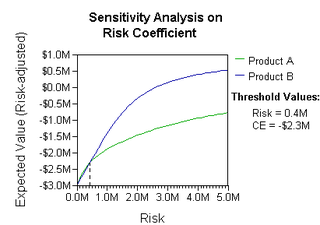VIKOR method steps
The VIKOR procedure has the following steps:
Step 1. Determine the best fi* and the worst fi^ values of all criterion functions, i = 1,2,...,n; fi* = max (fij,j=1,...,J), fi^ = min (fij,j=1,...,J), if the i-th function is benefit; fi* = min (fij,j=1,...,J), fi^ = max (fij,j=1,...,J), if the i-th function is cost.
Step 2. Compute the values Sj and Rj, j=1,2,...,J, by the relations: Sj=sum[wi(fi* - fij)/(fi*-fi^),i=1,...,n], weighted and normalized Manhattan distance; Rj=max[wi(fi* - fij)/(fi*-fi^),i=1,...,n], weighted and normalized Chebyshev distance; where wi are the weights of criteria, expressing the DM's preference as the relative importance of the criteria.
Step 3. Compute the values Qj, j=1,2,...,J, by the relation Qj = v(Sj – S*)/(S^ - S*) + (1-v)(Rj-R*)/(R^-R*) where S* = min (Sj, j=1,...,J), S^ = max (Sj, j=1,...,J), R* = min (Rj, j=1,...,J), R^ = max (Rj, j=1,...,J),; and is introduced as a weight for the strategy of maximum group utility, whereas 1-v is the weight of the individual regret. These strategies could be compromised by v = 0.5, and here v is modified as = (n + 1)/ 2n (from v + 0.5(n-1)/n = 1) since the criterion (1 of n) related to R is included in S, too.
Step 4. Rank the alternatives, sorting by the values S, R and Q, from the minimum value. The results are three ranking lists.
Step 5. Propose as a compromise solution the alternative A(1) which is the best ranked by the measure Q (minimum) if the following two conditions are satisfied: C1. “Acceptable Advantage”: Q(A(2) – Q(A(1)) >= DQ where: A(2) is the alternative with second position in the ranking list by Q; DQ = 1/(J-1). C2. “Acceptable Stability in decision making”: The alternative A(1) must also be the best ranked by S or/and R. This compromise solution is stable within a decision making process, which could be the strategy of maximum group utility (when v > 0.5 is needed), or “by consensus” v about 0.5, or “with veto” v < 0.5). If one of the conditions is not satisfied, then a set of compromise solutions is proposed, which consists of: - Alternatives A(1) and A(2) if only the condition C2 is not satisfied, or - Alternatives A(1), A(2),..., A(M) if the condition C1 is not satisfied; A(M) is determined by the relation Q(A(M)) – Q(A(1)) < DQ for maximum M (the positions of these alternatives are “in closeness”).
The obtained compromise solution could be accepted by the decision makers because it provides a maximum utility of the majority (represented by min S), and a minimum individual regret of the opponent (represented by min R). The measures S and R are integrated into Q for compromise solution, the base for an agreement established by mutual concessions.



